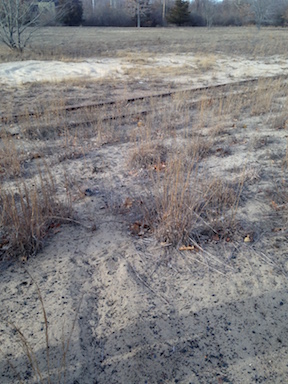Sand plains near an industrial site in central Connecticut.

In the 18th century, squatter farmers in central Connecticut tried to grow crops on sand plains. They failed, because the soil resembles the desert, and they abandoned the land. Particular plants and trees thrive on sand plains, or sand barrens, just as very particular plants adapt to deserts. But the farmers’ attempts to grow crops interfered with the sand plains. Seed bans of the failed plants reside in some of the remaining sand plains. And beause of this, the sand plains look different than they would have without that.
The human imprint showed up early. For thousands of years before farmers began planting seeds here, the native tribes burned the land from time to time. This kept undergrowth down and encouraged the seeds of certain trees and plants. The sand plains were therefore home to pitch pines and scrub oaks, two species that thrive on periodic fire.
I learned all this a few weeks ago while reporting a story for the next Connecticut Woodlands magazine, the quarterly of the Connecticut Forest and Park Association. Sand plains count as one of a baker’s dozen of “imperiled” ecosystems. Sand plains are rare today. Developers loved to build industrial and commercial buildings on them. They have no rocks the way most Connecticut land does. More than 95 percent of sand plains have disappeared beneath development. And those that are left function differently than the much larger original ones.
